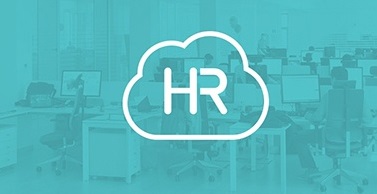
Over the last year, Zalaris has markedly stepped up its geographic and service expansion journey – first fuelled by the acquisition of Germany-based Sumarum AG and then with the acquisition of U.K.-based ROC Global Solution Consulting.
It’s important to note that Zalaris’ success in the wider Nordic market was also a result of two acquisitions soon after its formation (while its subsequent geographic expansion into Finland, Poland, and the Baltics were all a result of contract expansions with existing clients). These acquisitions provided Zalaris with the foundation and resources it needed to win subsequent business in these countries, including with Teliasonera, SAS, and a Swedish multinational networking and telecommunications company, and increase its turnover from ~$1.5m in 2001 to ~$21m in 2017, a CAAGR of ~18%.
Here I take a quick look at the geographic and service impacts of the two most recent acquisitions.
Geographic impact
The two acquisitions have clearly had a major impact on Zalaris’ European footprint, and Zalaris places an emphasis on establishing a physical presence in each country in which it serves clients. Prior to the acquisitions, Zalaris’ footprint was exclusively concentrated in the Nordics and Baltics, including the following eight countries: Norway, Sweden, Denmark, Finland, Poland, Estonia, Latvia, and Lithuania, with Norway alone accounting for nearly 45% of its revenues. Post-merger, the combined companies will still generate half of its revenues from both Norway and Sweden, but approximately a quarter of its revenues will come from DACH and the U.K.
Both acquisitions add resources across Central and Western Europe, as well as the U.K., to support multinational organizations. ~ 40% of Zalaris’ legacy HR outsourcing clients are served in multiple countries, including Nordea (which is also Zalaris’ largest implementation of SAP SuccessFactors to date), Statoil, and Telenor, and Zalaris is keen to expand its European footprint to enhance its ability to target and serve multi-country European organizations.
Impact on service mix
However, while geographic expansion is important to Zalaris, and these acquisitions have had a major impact in expanding Zalaris’ European footprint, their contribution to enhancing Zalaris’ service mix is equally important. These acquisitions help to facilitate Zalaris’ transformation into a one-stop-HR-shop for large and midmarket European-headquartered organizations by diversifying its service line offerings.
While Zalaris’ legacy business provided HR outsourcing, consulting and cloud services, ~90% of its total revenues were from payroll and transactional HR outsourcing, and the majority of these revenues were generated from a small number of clients. Both the ROC and Sumarum acquisitions support Zalaris’ ambitions to help its clients transform their HR operations by assisting them with SAP SuccessFactors deployment, and cloud conversion by boosting Zalaris’ consulting and advisory capabilities. In particular, the consulting group will be a key catalyst driving increased adoption of Zalaris’ cloud services.
Ultimately, following integration in mid-2018, the combined entities will operate as more of a cohesive and balanced unit, paving the way for Zalaris to be a prominent HR outsourcing and consulting contender in Europe, supporting organizations in a cloud HCM environment leveraging SAP SuccessFactors.
Sumarum & ROC in brief
For the reasons outlined above, both Sumarum and ROC are natural fits with Zalaris, enhancing both its service portfolio and its geographic coverage.
Sumarum, founded in 2001, is a provider of HR consulting and outsourcing services, with revenues of €19.6m (~$24m). Sumarum is a certified SAP partner and is a specialist in implementing and operating SAP HCM systems, with ~60% of its revenues related to consulting services, which extends to both public and private sector entities across Germany, Austria, and Switzerland. Like Zalaris, Sumarum provides cloud-based payroll and HR solutions exclusively on SAP platforms, with the remaining ~40% of its revenues from AMO and HR outsourcing services (serving ~45k employees per month). It has nearly 180 employees throughout five service centers in Germany, and primarily serves organizations with ~3k – 5k employees. The main sectors served include education, government, non-profits, and energy; clients include Germanwings, Goethe Institut, and Nintendo Europe.
ROC, founded in 1998, is a HCM specialist consultancy, with ~100 employees across five locations in the U.K., Germany and Poland, and revenues of NOK 100m (~$12m). Its areas of expertise include time and pay, talent management, shared services, analytics, business transformation, portal solutions, and global support. Key technologies leveraged by ROC include SAP HANA, SAP HCM, and SAP SuccessFactors. ROC is also a SAP silver partner and a verified SuccessFactors partner in the SAP PartnerEdge program. ROC’s clients include Britvic, Hampshire County Council, and Montblanc.
]]>
It has been 10 months since the announcement that Aon was divesting the businesses within its Outsourcing segment to private equity firm Blackstone, and 6 months since Alight was formally launched as a new company, which makes it an ideal time to review its progress and where it is headed in 2018.
By all accounts, it was a smooth transition, with client retention remaining high. But more importantly, the separation allowed the company to create a new identity, departing from its roots as the administrative arm of a much larger global professional services firm to reflect a more modern approach that emphasizes a consultative partnership with its clients.
The consultative partnership approach is becoming increasingly important as more and more organizations seek solutions that go beyond cost reduction to those aimed at solving larger business problems, such as increasing employee engagement and helping employees optimize their benefit selections. With market expectations changing, the line between consulting and administration is blurring, so it’s imperative for suppliers to adapt in order to meet demand for this higher level of service. While Alight is still at the initial phase of its journey to be an impactful advisor, its direction on this front is clear.
Alight’s other key priorities for 2018 include innovation with both its services and technology, as well as creating an engaging user experience, which are better viewed within the context of its two core businesses.
HR & Financial Solutions
Its HR and financial solutions segment is a mixture of hosted legacy HR BPO deals that it continues to support, and its newer cloud-based HR and financial services offering, which includes advisory services, deployment services, AMS support, and HR BPaaS support.
In 2017, Alight experienced continual expansion for its cloud services, including deployments for both Workday HCM and Workday Financials. One of the more significant trends in this business is the company’s growth internationally, including in Europe (largely the Nordics) and APAC.
Over the next year, growth is expected to continue in all regions, with APAC slated to be the fastest growing. More importantly, Alight intends to expand its service support, specifically focusing on services for the mid-market as well as a co-sourced and fully outsourced payroll offering.
Health & Wealth Solutions
Alight’s health and wealth solutions segment contains its legacy benefits administration service offerings, including various H&W services as well as DC and DB administration.
Highlights from 2017 include launching its unified data platform, which aggregates data from multiple sources and will be further enhanced to provide a consumer-centric view of each individual participant served.
2018 investments will focus on expanding the digital user experience, including releasing an enhanced mobile app that will have capabilities for annual enrollment. It will also launch a new integrated partner network on UPoint that will include seven providers in Q1 2018.
It’s clear that Alight’s 2018 vision will include a heavy emphasis on technological developments, especially with the front-end user experience, which is pivotal to address wider business issues as well as expectations from an increasingly diverse workforce.

In my last blog, I laid out 2018 predictions for two areas of talent management: recruiting and learning (see here). This blog looks at what to expect over the next year for payroll services and benefits administration. Trending topics in these areas over the last year included cloud, compliance, configuration, and consumerization.
Payroll
The payroll landscape has shifted away from traditional bureau payroll services towards technology-based managed payroll services. Presently, ~80% of payroll contracts are delivered on cloud systems, but it’s the future developments of these platforms that will take center stage over the next year.
2018 developments will focus on enablers to make the move to cloud faster, simpler, and more manageable, especially for SMEs where momentum for cloud payroll systems will take off. Also, expect to see additional offerings that facilitate integration to external systems such as ADP’s Global Cloud Connect and CloudPay’s Cloud Connect 2.0.
Initiatives around driving transparency for both the organization as well as its employees will be top of mind in 2018, similar to ADP’s recently launched NextGen Payroll engine, which was designed and built with the user in mind. A greater level of transparency in payroll will also facilitate optimization of benefit choices.
Over the last year, the use of RPA for repetitive payroll tasks such as data processing and reconciliation has become quite common. In 2018, suppliers will seek to leverage machine learning and cognitive capabilities to differentiate themselves. Another significant advancement in 2018 will be around launching chatbots to create a conversational user experience in real-time.
In 2018, the global payroll market will grow by ~4%, with multi-country activity increasing 3.5 times faster than single-country contracts. In fact, over the last year, several payroll vendors geared up for global expansion, including NGA HR who launched a managed payroll offering in Africa, Ceridian who expanded its payroll capabilities in Europe, and activepayroll who established a presence in Germany.
Benefits administration
2017 marked the end of the consumerization era in benefits administration (which emphasized a redesign of the user experience to incorporate consumer shopping trends in the enrollment experience, as well as the addition of voluntary benefits), to make way for the benefits optimization era.
The concept of optimization is in its infancy, but that will change over the next year and beyond. Currently, optimization tools in the market tend to be narrow, with most focused on “financial wellness.” The theme of financial wellness has been important for the last few years and continues to expand to a broad range of topics, and it will only get more personalized over time. To date, “health and wellness” optimization tools have only begun to scratch the surface, and will be a big area of development over the next year.
In 2018, buying patterns for benefits administration services will focus on best-of-breed suppliers, making partnerships all the more important to bridge the gap in tying services together to a deliver a cohesive experience. Beyond partnering, tier one vendors will turn their attention towards data aggregation, like Fidelity Investment’s data sharing solution, Access, which facilitates aggregation of financial information across third-party websites and applications. In general, centralizing and aggregating data will be critical in next generation benefits administration services.
One final point of interest to watch for in 2018 is the resurgence of multi-process HR services deals, which have been revived by the adoption of cloud-based HCM systems, including SAP SuccessFactors and Workday HCM. However, unlike the legacy deals, the new wave of activity will be focused on narrow HR BPaaS services, with HR administration, payroll, and benefits support as the most common bundle. In addition, these contracts will likely include ongoing AMS support.
2017 did not disappoint and, based on current predictions, 2018 will be another exciting year in the HR services market.
]]>
Relative to other HR services, the application of intelligent automation in benefits administration is lagging, but is slowly making progress. With respect to RPA, Conduent and Alight are among the first movers, with both using bots for manual calculations in pension administration. In addition, Alight has deployed bots for low-level transactional work that is typically offshored, and in 2016, Conduent launched an intelligent technology group, which is focusing on leveraging RPA to drive improvement across its entire HR services business.
Fast followers currently with initiatives around RPA include other tier one providers. For example:
- ADP has partnered with Symphony to roll out its first RPA program for 2018 annual enrollment, which will include four RPA processes, with eight robots live
- Fidelity will incorporate RPA in various processes, including reducing the implementation time for HSAs
- Mercer will have ten robots in its operation by the end of the year and will launch more in 2018.
In addition to RPA, the use of chatbots and automated virtual assistants is also increasing in the benefits market. For example:
- Alight is currently leveraging an IVA solution within its DB and DC administration business that includes ~425 questions, and will launch a chatbot for its H&W services business in H1 2018
- Businessolver launched its chatbot, Sofia, in time for 2018 annual H&W enrollment
- Mercer recently launched a chatbot for internal use to assist its client-serving teams with benefits administration inquiries in Asia
- Fidelity launched an automated virtual assistant in its retail business earlier this year to help users find general information on the Fidelity.com website
- ADP and Conduent are actively seeking partners to deploy chatbots
- Morneau Shepell is considering the use of an automated virtual assistant in its EAP business for service-type calls, such as changing appointments.
Both Alight and Businessolver’s chatbots are equipped with machine learning, allowing for easy analysis so that providers can quickly understand what information needs to be added to the chatbot. Outside of chatbots, the use of machine learning in benefits administration is in its infancy. But, it’s only a matter of time until the use of all the intelligent automation tools becomes the norm.
]]>
The gig economy has been a recent trending topic. While the concept of gig workers is nothing new, the attention being paid to it is, especially since this is an area whose growth has been facilitated by the digital marketplace. Here, I take a quick look at the challenges gig workers present for HR.
Gig workers present a challenge on several fronts, especially when it comes to managing the workforce, since contingent workers are often managed separately from permanent employees. In fact, ADP research finds that only ~40% of organizations report that HR owns all talent (i.e. permanent and contingent workers). And the use of contingent workers by organizations will only increase in the future, especially within certain occupations such as IT, media, and communications.
To support this growing trend, some MSP vendors are offering blended services with RPO, essentially moving towards a total talent management model. For example, Alexander Mann Solutions provides this blended model to an energy client, supporting 500 contingent workers and 3k permanent employees per annum.
But there are other concerns with the gig economy, specifically around the financial wellness of contingent workers. Over the last five years, benefits administration vendors have been launching initiatives focused on providing educational and decision-support tools to empower participants to make good financial decisions. More recent developments focus on holistic financial wellness offerings that extend beyond planning for retirement, and incorporate assistance around student loan debt management, budgeting for college, and saving for emergencies. Unfortunately, however, contingent workers do not typically receive employer-paid benefits.
Current estimates of the size of the gig economy vary greatly ranging from ~10% to ~35% of the U.S. workforce. And it is important to note that many gig workers also have traditional full-time jobs (i.e. hybrid gig workers), which will provide them access to employer benefits, including retirement plans and health insurance, as well as annual and sick leave. But does this represent enough gig workers to the point that HR shouldn’t be concerned? Findings from a recent study by Prudential suggest not.
The Prudential study, Gig Workers in America: Profiles, Mindsets and Financial Wellness, found that 16% of pure gig-only workers and 25% of hybrid gig workers have assets in an employer-sponsored retirement plan compared to 52% of permanent workers. And when it comes to some voluntary benefits such as disability insurance, the stats are even worse for contingent workers.
It’s clear that employers will continue to leverage gig workers. Therefore, HR suppliers need to first recognize the issues that this class of workers creates across the HR lifecycle, from hiring to managing talent, to assistance with financial security, and then create solutions that address the blind spots and gaps in order to optimize HR.
]]>
This week, ADP held its annual industry analyst event in NYC, and as well as welcoming guests with apples to celebrate the arrival of fall, it also ushered in the season with significant news regarding its HR technology innovations. One thing is clear about the technology-enabled services company: its investments in innovation continue to accelerate, as it invested ~$450bn in FY 2017 – a significant increase from the ~$150m invested in FY 2011.
The key areas of innovation ADP has delivered to date include:
- Cloud HCM platforms: across its cloud suite, which includes Run, Workforce Now, Vantage HCM, and GlobalView, ADP supports ~570k cloud clients, adding ~40k in the last year
- Mobile: its mobile app has ~12m users
- Big data and analytics (via ADP DataCloud): there are ~4k analytics clients and ~1.5k benchmarking clients
- Open HCM ecosystem (ADP Marketplace): there are currently ~205 apps available, ~6k subscriptions, and ~4k downloads from ADP Marketplace.
While client-centric innovation has been a focus at ADP for several years, the company is going even deeper now with its latest next generation technology. Key attributes of ADP’s NextGen Platform include the ability to create dynamic teams, which incorporate analytics (such as attrition rates), and ~30 mini apps (and growing) for various HR processes across the entire lifecycle; these allow organizations to personalize their HR experience with the functions most pertinent to their needs, whether by company, region, or country.
In October, ADP will launch its NextGen Payroll engine which was again built with the user in mind. The system has ~51 predefined policies to facilitate configuration, and is event-driven, with payroll recalculated in real time. Advantages of the new payroll system for employees include flexibility of when they get paid, the ability to see all of their pay if they work multiple jobs and are paid by ADP, and transparency in how their pay is calculated. Transparency is also a common theme for HR practitioners as well as getting global insights. Already available is ADP’s NextGen Tax engine, which is supporting ~300 clients to date.
Other key initiatives include building out DataCloud further. Recent enhancements include launching the following data explorers: Turnover Probability and Pay Equity Explorer, with additional data explorers such as overtime projections on the horizon. A significant development with DataCloud includes the application of machine learning, which will add personalized assistance to HR (e.g. schedule certain reports to run automatically, or recommend that you run other reports based on what your peers in a particular industry are doing) and push insights to HR and managers (e.g. notify you if overtime is high). In addition, ADP will launch Mobile Insights this year.
The HR services industry is at an inflection point where technological innovation like that at ADP is necessary and will significantly impact whether vendors continue to experience healthy growth rates year-on-year.
]]>
For years, the application of analytics in HR services has been heavily focused on descriptive information such as workforce demographics (e.g. average employee age, proportion of males to females, number of employees are nearing retirement, etc.) or talent management metrics (e.g. average time to hire, cost per hire, number of training hours per employee, etc.). In fact, ~90% of analytics leveraged in multi-process HR services is descriptive-based and/or includes benchmarking. In order for analytics to really affect business outcomes, however, organizations need to move beyond descriptive metrics. Currently, a number of HR services vendors are focused on developing predictive analytics and, to a lesser extent, prescriptive analytics.
One area where predictive analytics is heating up is with employee turnover. For example, late last year, ADP launched its Turnover Probability solution, powered by the ADP DataCloud, which includes:
- Identifying the likelihood of voluntary turnover across an organization, within job types, locations, and teams, as well as for individual employees
- Analyzing combinations of a multitude of factors related to job characteristic, organizational dynamics, compensation elements, and employee demographics that impact the likelihood of employee turnover
- Allowing organizations to compare their turnover risk against industry risk benchmarks that draw upon ~30m employees within ADP's Big Data.
This year, Ceridian launched predictive analytics for its Dayforce HCM platform, which includes interactive visual dashboards that provide employee information including job title, performance percentile, tenure, flight risk, and the estimated cost to replace.
Retention is a huge issue for organizations, and with predictive analytics, organizations can more accurately determine the likelihood of future turnover and build retention plans accordingly.
WNS is another example of an HR services vendor with extensive predictive and prescriptive analytics capabilities. In 2017, it added performance prediction, attrition propensity, and more. WNS’ full suite of predictive and prescriptive analytics includes:
- Workforce management: workforce planning, retention model, capacity modelling, and attrition propensity
- Compensation & benefits and payroll: rewards policy effectiveness, market benchmarking, and wage cost modeling
- Performance and learning: performance prediction, pay for performance relationship model, and succession planning
- Talent acquisition: predictive hiring model, social media strategy, employer brand positioning, and stability index model.
There is already an abundance of data for HR managers, so the thought of advanced analytics can be overwhelming, which is why it is essential for organizations to have strong relationships with their HR services provider who can grease the skids and turn the data into a powerful tool that affects business outcomes.
]]>Principal issues & operational priorities
The main issues and operational priorities cited by respondents included the following:
- Standardization of HR processes
- Increasing self-service utilization
- Increasing efficiencies/reducing manual intervention
- Statutory compliance.
Other issues included:
- Driving down costs in the delivery of HR services
- Redesigning processes in a way that improves the user experience
- Updating technology systems
- Delivering a roadmap of investment and change
- Implementing a robust quality control framework.
These issues and priorities, in turn, directly impacted the drivers and benefits organizations were seeking to obtain from outsourcing multi-process HR services, as explained below.
Drivers for outsourcing multi-process HR services
The top driver among respondents included seeking lower costs, including the use of labor arbitrage. Approximately 17% of organizations were seeking global standardization, followed closely by the need to increase productivity and automation.
Other reasons cited include leveraging best practices (13%), improving quality and service delivery (11%), HR transformation including processes and technology (7%), greater accuracy/error reduction (5%), scalability (4%), and continuity (2%).
Top vendor selection criteria
Nearly 25% of respondents made their decision on which supplier to use based on the rapport that was established with the vendor, with many organizations emphasizing the need to have a true partner where the relationship would continue to build and improve over time, and where the respondent felt that the supplier was invested in its clients’ long-term success.
The next highest selection criterion was cost, followed equally by the supplier’s ability to handle complexity and their ability to demonstrate knowledge and proficiency.
Current satisfaction levels & areas for improvement
Multi-process HR benefits: a selection of current client satisfaction levels and future importance ratings
Respondents’ current satisfaction levels derived from multi-process HR services reveals that there is plenty of room for improvement. While organizations are mostly satisfied with the cost savings achieved, driving further standardization and consistency in HR processes should be the main priority for vendors over the next few years. Another significant area for improvement is the turnaround time for HR transactions and inquiries.
In terms of respondents’ qualitative feedback, by far the top area for improvement cited related to various aspects of innovation, including:
- Integrating more innovative tools from a technology perspective, including robotics and AI
- Being proactive and formal as new innovations are released
- Working more cohesively to bring innovations to services faster, clearer, and within a defined timeline
- Introducing more incremental innovations.
Other areas cited for improvement included:
- Strengthening thought leadership capabilities
- Identifying issues and driving process improvements
- Applying knowledge to an activity, rather than just completing an activity
- Improving communications, especially when a change will be made.
Overall, respondents are reasonably satisfied with their current multi-process HR services supplier, and would on average rate their likeliness to recommend their existing vendor at 7.8 out of 10 in favor of recommendation.
NelsonHall’s NEAT vendor assessments look in detail at vendors’ ability to deliver immediate benefits to their clients, as well as their ability to meet future client requirements, and assist strategic sourcing managers in assessing vendor capability while cutting the time and cost associated with their sourcing projects. To find out more, contact Guy Saunders.
]]>
This is the second of two articles on the multi-process HR BPS market. NelsonHall’s latest market analysis report on the multi-process HR BPS market recognizes two types of strategies adopted by vendors taking a modern approach to multi-process HR services: intelligent technologies and cloud-based HR services. Here, I take a quick look at both strategies.
Intelligent technologies
The intelligent technologies approach to multi-process HR services emphasizes the use of automation tools, AI, and advanced analytics to enhance multi-process HR BPS services. Services in scope within these deals tend to include workforce administration, payroll, and often administrative functions around talent management processes, as well as analytics, leveraging on-premise or hybrid technology arrangements.
The top drivers for buyers under the intelligent technologies approach include:
- Improving process controls and driving efficiency
- Streamlining HR processes through automation to reduce process duplication
- Obtaining greater transparency and visibility through advanced analytics.
The biggest inhibitors and challenges with this approach include the following:
- Often, organizations are looking to address larger transformational issues first, including moving to a cloud-based HCM platform, or at least consolidating the number of systems used
- The challenge of demonstrating how intelligent technologies will generate cost savings over the life of the contract; this includes introducing continuous technological improvements that reduce costs beyond the initial year.
To succeed, suppliers must look to continuously develop intelligent technologies, especially machine learning, for different HR processes, and be able to deploy intelligent technologies for on-premise systems (since there will be a certain proportion of organizations that will delay the adoption of cloud platforms).
Cloud-based HR services
The cloud-based approach to multi-process HR services, on the other hand, emphasizes support around broader offerings, such as HR SaaS implementation and ongoing AMS services, in addition to multi-process HR BPS services. The service scope of these deals includes workforce administration and payroll, with an increasing focus on managed benefits, and can include deployment and/or ongoing release management support. The key distinction here is that the underlying technology is 100% cloud-based, including for core HR and payroll.
Buyers of this approach are adopting it because they are seeking a technology transformation to a more manageable model and also lack the time, skills, or expertise to operate internally in a HR cloud environment.
Impediments to adopting this approach include a desire to ride out previous technology investments, and also the impression that cloud HR software is so intuitive that organizations can operate it internally as the ‘be-all and end-all’ solution. Other issues with the cloud-based HR services approach include ensuring integration with other HR systems.
Under this approach, it is imperative for vendors to create fast and secure data sharing capabilities with third party applications for seamless integration, with an eye on incorporating intelligent technologies, particularly chatbots, in the near future.
While many providers tend to hone capability in one of these areas, ancillary developments are often made in the other due to competing market demands for cloud HR technology adoption and improved service quality.
Click here for the first article in this two part series: State of the Multi-Process HR Services Market
]]>
The multi-process HR services market has evolved significantly over the years. The traditional approach, characterized by comprehensive end-to-end HR BPS services over a long term (often 7-10 years) leveraged on-premise solutions that were heavily customized. This gave way to the transitional approach, best characterized by hybrid technology solutions where core HR and payroll is on-premise, and talent management processes leverage cloud-based solutions. And now, multi-process HR services have evolved to a modern approach, characterized by:
- Cloud-based HCM platforms, either vendor proprietary or TP systems, such as Workday HCM and SAP SuccessFactors, as well as Oracle HCM Cloud to a lesser extent
- Narrow HR BPS services, typically HR administration and payroll, for 3-5 years
- Mid- and large-market buyers, including the lower end of the mid-market (<5k employees)
- Automated processes and configuration.
Currently, the modern approach accounts for ~30% - 35% of the market, with ~45% - 55% of deals taking the transitional approach, and the remainder under the traditional approach. Over the next five years, the modern approach will increase, representing ~60% - 65% of the multi-process HR services market.
There are many issues shaping the modern approach to multi-process HR services, including:
- Globalization and growth, driving the need for standardization and simplification
- Maintaining compliance, as regulatory changes are rampant globally
- The need to replace inefficient and time-consuming labor-intensive processes
- Moving beyond cloud HCM technology-only deals due to challenges managing and optimizing release updates
- Demands for personalization and the need to digitalize the user experience to increase engagement and collaboration.
Accordingly, vendors tend to take one of two approaches to the modern multi-process HR services market:
- Emphasizing the use of intelligent technologies such as robotics, automation, machine learning, and advanced analytics
- Focusing on assisting organizations migrating to, or operating in, a cloud HCM environment by providing broader cloud support services such as SaaS deployments and ongoing application management support services.
Both of these approaches have multi-process HR BPS services as the foundation, and are focused on enhancing these core services. Stay tuned for a follow-up blog that will take a closer look at the modern approaches to multi-process HR services.
]]>
As H1 2017 comes to a close, it’s a good time to reflect on recent key activity and where the market is headed for the rest of the year and beyond. Here, I round up what’s trending now in payroll, benefits administration, recruitment, and learning.
Payroll
The most common theme in the payroll market is global and multi-country activity. NelsonHall estimates that multi-country payroll will grow 4x the rate of single-country payroll services through 2020, accounting for nearly a quarter of the market. Supporting this prediction were several new contract awards, including Neeyamo signing a contract with a global CPG company headquartered in the U.K., with payroll delivery extending to ~60 countries across six continents; and Ramco signing a multi-million dollar HCM and global payroll contract with Panasonic Group for ~20k employees across 21 entities.
In anticipation of the multi-country trend, some regional payroll providers made acquisitions to increase their presence and expand their geographic footprint. For example, Nordic-based Zalaris acquired Sumarum AG to expand its capabilities in Germany to better serve MNCs, and its geographic expansion plans aren’t ending there. Australia-based Ascender was also on a roll, acquiring NGA HR’s Australia and New Zealand payroll business, including NGA’s proprietary Preceda and PS Enterprise platforms, as well as Japan-based Workcloud; both acquisitions help to facilitate Ascender’s 2020 strategy to be a leader in payroll in the APAC region.
Benefits Administration
In benefits administration, the focus is centered on the employee experience, including education, integration, and connectivity. A recent survey by T. Rowe Price found that plan sponsors believe they have a duty to help prepare their employees for retirement, and that ~48% have a metric to track the retirement preparedness of employees. Currently, many DC administration vendors have implemented initiatives focused on education to ensure retirement readiness, and these programs are now expanding to address other financial issues such as budgeting and student loan debt management, with targeted messaging for participants based on their situation and goals. The objective will continue to push towards total financial wellness for participants throughout their lives.
To date, initiatives around integrating health and wealth have largely focused on offering retirement plan participants access to HSAs to help individuals prepare for healthcare expenses in retirement. Since 2010, Fidelity’s HSA administration offering has experienced double-digit growth y/y, and over an 18 month period, Fidelity added ~65 new employer HSA clients, representing ~181k participants.
Empower Retirement is the latest plan administrator to add such an offering, partnering with Optum to launch The Empower Health Savings Account, which includes:
- Access to investment advice
- Health plan selection and enrollment
- Retirement plan management
- Inclusion of wellness programs and health savings account management.
The next phase of integrating health and wealth together will likely focus on the annual enrollment process, and include helping participants view the impact of their choices so better decisions about trade-offs can be made.
Finally, a big part of the employee experience is providing access to benefits information on mobile devices and increasing functionality on mobile devices. In H1, Businessolver joined other vendors with the launch of its mobile app, MyChoice, which allows users to:
- View their current and future benefits elections for medical, dental, vision, voluntary, and supplemental plans
- View medical savings account balances
- Upload their medical ID cards and benefit documents for dependent verification
- Receive reminders via push-alerts
- Chat with a representative to answer general benefits questions.
Recruitment
In recruitment, the focus is shifting towards total workforce services by offering blended RPO and MSP services to organizations. Traditionally, services for the contingent workforce were offered separately from RPO. In anticipation of demand for total talent management services, supplier strategies vary, from adding MSP services to reorganizing portfolios (as was the case for TrueBlue, who transitioned its MSP business from Staff Management | SMX to PeopleScout).
Recruitment continues to be an area for strong growth, as evidenced by delivery expansions in H1, including:
- Allegis Global Solutions opening a recruitment services delivery center in central Birmingham, U.K.
- Alexander Mann Solutions opening an expanded global client service center in Shanghai
- Pontoon opening a new office in Bangalore
- Korn Ferry Futurestep opening a European talent delivery center in Manchester, U.K.
Learning
Not only is there increasing pressure to making training programs more effective, many corporate L&D departments are facing mounting pressure to demonstrate the impact of training on the bottom line. Many vendors have responded by organizing learning BPS offerings around specific performance improvement objectives, including:
- Strategic transformation
- Revenue and competency
- Compliance
- Cost reduction
- Learner engagement.
Learning developments will consequently be made depending on a vendor’s core performance objective focus. For example, with respect to the learner engagement objective, Raytheon Professional Services has built a number of electronic performance support systems (EPSS) for clients to improve performance and productivity by coaching employees through tasks.
]]>
Over the last few years, Ceridian has been focused on re-establishing itself as a cloud technology and service provider with its Dayforce HCM platform. Here, I look at the progress the company has made, including a review of current and future Dayforce developments and client successes.
Current Dayforce developments
In all its deals, Dayforce is always the global employee record. Modules include:
- WFM: time and attendance, absence management, scheduling, and labor planning
- Payroll: native payroll, ConnectedPay, and tax
- Benefits: eligibility, open enrollment, and ACA management
- Talent: Team Relate, compensation, onboarding, recruiting, and performance.
Ceridian’s investments in Dayforce are influenced and prioritized by its product idea portal, which allows its customers to submit feature requests that are then voted on by other clients. In recent years, developments have been focused around talent, with its latest enhancements on compensation and learning.
Compensation management allows users to define compensation budgets for base and variable pay and allocate compensation pools to teams. It also includes scenario modeling for managers, total reward statements, has analytics embedded, and provides pay equality drill-downs within each job, including performance and tenure information to identify disparities.
Dayforce learning management has been developed and will be available for clients later this year. The module will allow users to rate courses, and includes machine learning to recommend courses to users, with content provided from a partner. Other features include a personalized training calendar, learning paths, mandated training, publisher content integrations, and audits, reporting, and alerts.
Predictive analytics is another development for this year, focused on improving retention by predicting employee flight risk, ultimately increasing cost savings from reduced turnover.
Dayforce clients
NelsonHall estimates that Ceridian has ~3.3k clients (supporting ~5m employees) on Dayforce, including Rubio’s Coastal Grill and Blue Man Group. Rubio’s was leveraging a paper-based solution for its ~4.5k employees, and was seeking a partner to improve compliance. Rubio’s selected Dayforce because it was a single platform and was intuitive, and it executed a large change management initiative around the adoption of Dayforce. Benefits of Dayforce include reducing its onboarding time from 3 hours to 30 minutes. Rubio’s is currently expanding its relationship with Ceridian and is implementing the performance management module.
Prior to implementing Dayforce, Blue Man Group’s payroll was decentralized and the company was using three different payroll systems. Blue Man Group was seeking a solution that was streamlined, that would improve accuracy, and reduce processing time, with a user-friendly experience. What appealed to Blue Man Group about Dayforce was the unified system experience, flexible configuration, and security features. After implementing Dayforce, payroll run-time was reduced from 12-16 hours to 4 hours. Today, Blue Man Group is leveraging the HR, payroll, tax, scheduling, and benefits modules from Ceridian for its ~525 employees, with the possibility of adding on talent modules in the future.
Future developments
Ceridian shows no signs of slowing down, with future developments focused on succession planning and offboarding, among others. To facilitate implementations, Ceridian launched Dayforce Activate in late 2016, which was geared towards smaller organizations, but Ceridian will be expanding this guided implementation tool to organizations with more than 1.5k employees.
Historically, buyers of Dayforce tend to be North American headquartered mid-market organizations, but over the last 18 months, Ceridian has made headway with many large market organizations with >15k employees and has diversified its vertical markets by gaining traction in the financial services and healthcare sectors.
Long-term plans are to increase its global footprint, which will be facilitated by the Payroll Services Alliance, which extends payroll services to ~80 countries via partnerships with Ascender, Aditro, Seresco, SD Worx, Trianon, Elanor, and FIS Antex.
As Ceridian expands globally and builds its client base further, NelsonHall also expects it to provide benchmarking.
In summary, business focus has been key to enabling Ceridian’s rapid transformation as a cloud technology and service company.
]]>
Last week Aon Hewitt announced that it has signed a definitive agreement to sell nearly all the businesses within its Outsourcing segment (including benefits administration, HR BPO, and Workday cloud HR services) to Blackstone. Initially, it may appear that this is a step backwards from some of its prior acquisitions, including Hewitt in 2010 for benefits administration, Exult in 2004 for HR BPO, and OmniPoint in 2012 for Workday services. However, the separation will be highly beneficial as the new entity will be a pure play, focusing on operational HR administration activities.
There are a few nuisances with the sale, since some benefits businesses will be retained by Aon Hewitt, including DBCalc and its private exchange for active employees and retirees. The key with both of these offerings is their tight integration with businesses in Aon Hewitt’s Consulting segment. For example, DBCalc is typically bundled with actuarial services.
The private exchange business, on the other hand, will essentially straddle both organizations, with Aon Hewitt retaining the front-end architecture and design and associated work around procuring carriers, plan details, brokering, etc., and Blackstone taking over the back-end administration, technology, and call center support services.
In addition, some U.K. and Canadian benefits administration businesses will be retained by Aon Hewitt; like DBCalc, these businesses are tightly integrated with consulting services, and make up a small portion of the overall portfolio.
Although not technically operating under the Outsourcing segment, it’s worth noting that Aon’s global benefits business, including brokerage and consulting services, will not be part of the sale.
With the remaining Aon Hewitt focusing on advisory services, the two companies will continue to have a working relationship, especially with respect to the large market, but there will not be an exclusive partnership in place.
More importantly, the separation will allow each entity to make targeted investments in their core capabilities, resulting in faster innovation overall. In the short-term, the roadmap for each business being sold will remain intact; for example, the current emphasis of benefits administration is on improving the participant experience, which includes combining health and wealth together, as well as driving self-service and enhancing the customer experience. With respect to the Workday business, the key objective is to provide a flexible and modular offering around Workday HCM and Workday Financial Management.
From Blackstone’s perspective, acquiring Aon Hewitt’s Workday business diversifies its HCM technology holdings, following its minority investment in Kronos in 2014.
The deal, for a cash consideration of $4.3bn at closing and additional consideration of up to $500m based on future performance, is scheduled to close in 60 days, with a new company name to follow.
]]>
Following several years of growth, the HR outsourcing market continues to ride the crest of the wave, and is gearing up for a prosperous 2017 following investments across all service lines. We will shortly be publishing an in-depth blog on HRO predictions for 2017, but first I take a quick look at what happened in 2016 to lay the foundations for things to come, specifically in payroll services, benefits administration, RPO, learning services, and cloud-based HR.
Payroll Services: HCM Integration & Multi-Country Expansion
Highlights in the payroll market in 2016 included an emphasis on integrating payroll systems with HCM software, which is especially important when it comes to multi-country payroll, an area targeted for huge growth over the next three years. In anticipation of multi-country demand, vendors have continued to expand their payroll capabilities, with ADP’s payroll services now extending to ~111 countries, and NGA HR launching a payroll offering across 33 LATAM countries.
Other 2016 milestones reached in payroll services include Paychex exceeding 1m worksite employees serviced across its payroll and PEO offerings, and OneSource Virtual (OSV) exceeding 500 clients, while maintaining a client satisfaction rating of 98%.
Benefits Administration: Private Exchange Momentum
Private exchanges continued to gain momentum over the last year. Fidelity investments expanded its PIX, focused on SMBs, beyond Massachusetts and New York to Colorado and California, and Morneau Shepell launched a retiree PIX in Canada, adding 3M Canada as its first client. Vendor priorities have been focused on integrating voluntary benefits into the exchanges as well as within traditional H&W administration offerings.
Private exchanges are growing at 6% CAAGR through 2020, and Willis Towers Watson, with ~20% market share, is gearing up to capitalize on the growth in 2017 after recently expanding its delivery center in Arizona, to which it will continue to add headcount over the next year.
With respect to DC administration, Fidelity enjoyed another successful year, adding $65bn in new DC plan sales across ~1.3k employer clients in H1 alone. In addition, as of mid-year, Fidelity already had another $14bn in commitments for 2017.
Benefits administration acquisitions really heated up in H2, with Mercer making some key purchases, including Pillar Administration in Australia (which now makes it the largest superannuation provider in the country) and Thomsons Online Benefits, adding its global cloud-based benefits technology platform, Darwin.
RPO: M&A Hotspot
There were ~25 HRO acquisitions in 2016, ~40% of which were focused on RPO. Many of the acquisitions focused on expanding or strengthening geographic capabilities, especially for Randstad who acquired Penna in the U.K., Obiettivo in Italy, Careo Group in Japan, and BMC in the Netherlands.
And, while the U.S. and the U.K. markets are the most active for RPO, emerging markets in APAC and LATAM have high growth potential over the next few years.
Learning Services: Shift to Performance Targeting
The most significant change in the learning services market is the shift away from a transactional approach that pushes a catalog of service offerings towards an approach that leads with targeting performance objectives. On the backend, automation and analytics are key components of the performance-centric approach.
Trending themes by learning function include the following:
- Content: content curation services
- Delivery: digital modalities
- Administration: RPA
- Technology: cloud-based Learning Management Systems.
Cloud-based HR Services: Focus on Rapid Deployment
The cloud-based HR services market, including cloud consulting, implementation, AMS support, and HR BPaaS, took 2016 by storm. Key priorities were focused on launching guided implementation tools for rapid deployments, for example:
- NGA HR launched NGA FastTrack to rapidly deploy SAP SuccessFactors
- Ceridian launched Dayforce Activate, which shortens the implementation lifecycle to provide clients with a faster ROI
- Neeyamo launched Rapid Deployment for SAP SuccessFactors, which allows go-live to be achieved in 21 days
- Aon Hewitt launched a rapid deployment offering for mid-market organizations (1.5k-7k employees) who are migrating to Workday from a payroll service bureau provider, activating Workday core HR, U.S. absence, U.S. benefits, and U.S. payroll, including payroll settlement, check print, garnishment admin, and tax filing services in ~5 months.
Other initiatives were focused on ramping up delivery capabilities, with Zalaris opening a COE for SAP SuccessFactors in the Nordics, OSV opening a center in Ireland to provide support around Workday, and Neeyamo launching a SuccessFactors Employee Central service center.
All cloud-based platform providers, including SAP SuccessFactors, Workday, Oracle, ADP, Ceridian, and Ultimate have robust pipelines and roadmaps for continued innovation, making this one of the key areas to follow in 2017.
]]>
One of the top HR initiatives for organizations has been to replace legacy on-premise systems with cloud-based technology. In fact, as of Q4 2015, ~44% of organizations have moved core HR to the cloud according to PWC’s annual HR Technology Survey. This trend will not only continue, but will naturally expand to other HR functions, including payroll, followed by time and attendance, then benefits, and finally talent management.
There are many factors driving the trend towards cloud-based HR technology adoption, including globally dispersed workforces. Cloud-based HCM software has introduced a new group of suppliers focused on delivering services around cloud-based technology, including:
- Pre-deployment services, including HR cloud consulting
- Deployment services, including implementation
- Post-deployment services, including AMS and HR BPaaS.
An example of a vendor operating in this space is OneSource Virtual (OSV). OSV focuses its services exclusively around Workday and, since its inception, OSV has expanded its capabilities in line with Workday; for example, it developed HR BPaaS capabilities in the U.S., Canada, and the U.K. following Workday’s payroll localizations in these countries.
More importantly, OSV is getting ahead of the curve by entering into an alliance with CloudPay to offer a global WFA and payroll service called Global Workforce Administration. CloudPay produces ~800k payslips and processes ~$3.5bn in payments annually across ~120 countries, ~26 languages, and ~30 currencies, instantly expanding OSV’s ability to provide payroll services for multi-national corporations operating beyond the U.S., Canada, and the U.K.
This alliance is significant and will be an important factor in OSV’s growth. In addition to the demand for cloud-based technology and support, demand for multi-country payroll is also very high. NelsonHall’s recently published Targeting Payroll Services market analysis report reveals that the multi-country payroll market will grow four-times the rate of single country services through to 2020.
What’s more, the convergence of these trends is widespread and not just occurring within large market multi-nationals. For example, the average size of organizations for the Global Workforce Administration offering is just under 4k employees, and typically across ~8 countries. In addition to the U.S., Canada, and the U.K., top countries in scope include Germany, France, China, and India.
While prospects for the Global Workforce Administration offering come from a variety of industries, the highest demand is currently from the financial services, technology, and healthcare verticals.
The immediate needs of organizations include having one system of record globally in the cloud for HR and payroll, which OSV is situated to deliver on the Workday platform. Looking ahead, NelsonHall not only expects the trend to continue with other HR functions, but for organizations utilizing the Workday HCM platform to expand use to Workday’s Financial Management module, and subsequently add on finance & accounting BPaaS support, which OSV can also deliver.
Over the last year, OSV’s business development initiatives have positioned the company well to capitalize on the future direction of the market, and it will undoubtedly continue to expand its portfolio of cloud services support.
]]>
As earnings are released, it’s a good time to reflect on HR outsourcing trends by key service line. Here’s a brief round-up of market activity across payroll, RPO, and learning services in H1 2016.
Payroll
Payroll activity has been bustling in Europe YTD, with a strong emphasis on ramping up capabilities. SD Worx made two acquisitions to accelerate its growth across Europe, including Ceridian U.K. and Ireland, and Fidelis HR in Germany. Already the largest payroll provider in Benelux, SD Worx strengthens its footprint across EMEA through these acquisitions.
Continuing its expansion, Workday launched payroll in France. At the same time, Workday partners providing cloud-based HR services such as OneSource Virtual (OSV) and NGA HR have been expanding delivery capabilities in Europe as follows:
- NGA HR opened a new center in Bristol, England, that will also be an innovation hub for cloud HR, payroll, analytics, and HR BPaaS
- OSV launched the next phase of its European service center in Derry, Ireland, which currently has ~100 employees.
For leading payroll outsourcing providers, multi-country capability is a critical success factor, and most vendors continue to expand their footprint globally, e.g. ADP recently added payroll support for Angola, Azerbaijan, Guam, Mozambique, Puerto Rico, Tanzania, and Zambia.
For more insights into the payroll market, NelsonHall will be publishing its Next Generation Payroll Services market analysis in August.
RPO
The RPO market continues its evolution. NelsonHall estimates that ~43% of all RPO contracts include multiple countries in scope. Therefore, many vendors have been focused on expanding their geographic presence. Examples include:
- Randstad in Japan and Italy via its acquisitions of Careo Group and Obiettivo Lavoro respectively
- Cielo in Asia Pacific by expanding its delivery support in Singapore
- Adecco Group in the U.K. by acquiring Penna’s career and talent solutions business
- Alexander Mann Solutions by opening a second delivery center in Poland.
Learning
Contract activity for learning BPO (LBPO) was up significantly relative to H1 2015 across various verticals, including manufacturing, with wins focused on the automotive sector including:
- Raytheon Professional Services won a three year contract with BMW in Northern Europe for delivery, administration and management, deployment, and local adaptation services
- GP Strategies winning an automotive training contract with a Korean OEM as well as an operations training contract with a European Luxury OEM.
Also noteworthy was HSBC’s two-year extension with GP Strategies; HSBC is GP Strategies’ largest LBPO client.
Stay tuned for more highlights and trends from H1 2016 specific to benefits administration.
]]>Overall, HRO contract activity is up ~11% y/y in 2015. Renewals and contract extensions account for 25% of that activity, vendor changes ~20%, and new deals 55%. Regional and global multi-country contracts continued to grow in most HRO towers, especially payroll, which is also a strong driver for multi-country MPHRO contracts.
Although trending down slightly in the last three years, mid-market activity remains high globally. Contracts included:
- Xerox awarded a Total Retirement Outsourcing (TRO) services contract for 1.2k employees by Tennants Consolidated in the U.K.
- Zalaris awarded a MPHRO contract for 1k employees by Borregaard in Norway, including HR admin, payroll, travel expense, time and attendance, and personnel document archiving solution
- Raet awarded a payroll contract for 6.7k employees by Philadelphia Zorg in the Netherlands.
Public sector activity is up nearly 5% y/y and accounts for ~20% of contracts, including:
- Voya Financial and City and County of Honolulu: DC administration
- Equiniti and Her Majesty’s Passport Office: payroll and time and attendance
- TIAA-CREF and Lane County, Oregon: DC administration.
M&A activity continues to increase y/y with ~27 deals to date, up from 25 acquisitions in 2014. By service line, M&A activity within benefits administration remained high, while acquisitions within RPO have become increasingly aggressive y/y. The majority of the RPO M&As have been focused on expanding or strengthening existing RPO services, especially to add recruitment consulting capabilities such as Capita acquiring ThirtyThree, WilsonHCG acquiring Sumner Grace, and ReThink Group acquiring Consort Group. To a lesser degree, RPO vendors are also keen to expand their geographic footprint, with the emphasis on the U.S., U.K., and Canada.
New offerings launched recently that will gain momentum in 2016 include cloud-based HR services, including HR technology consulting/strategy, HR SaaS implementation services, and post-deployment support, which may or may not include HR BPO services. The biggest focus for most organizations has been on developing a cloud-based HR technology strategy, though some vendors such as Aon Hewitt who launched its offering about two years ago are further along the continuum, providing post-deployment application management support on Workday exclusively to many clients.
Much of this HRO activity from 2015 will shape the deals and future direction vendors will pursue in 2016. Other 2015 developments that will continue to evolve in 2016 include private health insurance exchanges and the use of robotics process automation within HR.
]]>Overall, there has been growth across ADP’s cloud-based platforms, including RUN, Workforce Now, Vantage HCM, and GlobalView HCM, with the total number of clients reaching ~501k, up 16% from ~431k last year. These platforms make up the foundation of ADP’s HCM business, so further developments and enhancements to its technology are paramount to its continued success.
For the last year, the focus has been on enhancing the user experience across most of these platforms. For example, the benefits module of Vantage HCM includes a comparison shopping experience, and a new onboarding tool will be released in the next few weeks. Another significant enhancement included the launch of ADP Marketplace in late 2014, which integrates third-party applications with ADP’s technology. To date there are ~60 apps in the ecosystem, including RightFit’s RightView, which was added last week.
In the U.S., ADP has focused on the synergy between payroll, HR, and benefits, which is now expanding globally through a partnership with Thomsons Online Benefits. Global/multi-country benefits offerings essentially take one of two forms:
- Multi-country benefits brokerage and consulting services
- Multi-country technology platform with optional local administration.
Thomsons’ Darwin platform will be integrated with ADP’s GlobalView HCM platform, which is geared towards MNCs. Other examples of multi-country technology platforms include Mercer’s MercerGold and JLT’s BenPal.
In terms of its future direction, ADP’s new big data platform, DataCloud, will be a significant focal point, which goes beyond providing analytics and reporting to include benchmarks beyond pay. Other future developments of DataCloud include predictive analytics and data exchange, which will show how workforce metrics impact business outcomes.
The largest opportunity for ADP is leveraging its HR BPO services, and ADP appears to be on the path to capitalize on this as it focuses on connecting its technology with expertise to transform HCM. This, however, will not happen overnight and while ADP’s Strategic Advisory Services can facilitate the connection to its HR BPO services, the bandwidth of Strategic Advisory Services to support such a venture will take time to develop, especially when compared to other HR BPO providers such as Aon Hewitt, Accenture, and Xerox that have separate consulting arms.
However, the ingredients for success are all present, so it’s just a matter of assembling them – though the outcome will be different for each client depending on their outsourcing mix. For example, for Sodexo, ADP provides end-to-end HR BPO services, while Kimball International has outsourced employment verifications and COBRA administration to ADP while retaining other services in-house using the Vantage HCM platform.
In any event, ADP is continuing on a path that is focused on client-centric innovation coupled with services.
]]>In the U.S., the emphasis will continue around Health & Welfare (H&W) services, stemming from the Affordable Care Act (ACA). In 2015, tier two H&W specialists such as Businessolver and TASC launched ACA reporting offerings, with many PEOs expected to follow suit in the near future.
As the entire benefits landscape shifts in the U.S., service providers have ramped up capabilities around key service lines such as private exchanges and spending account administration. For example, ADP launched its private exchange offering, which is focused on integrating with its other HCM offerings including payroll, HR, spending accounts, and its ACA offering Health Compliance. Blue Cross Blue Shield has also partnered with Connecture to launch its BCBS Marketplace for retirees in 45 states. In addition to adding private exchange clients, most vendors will be focused on expanding and enhancing private exchanges for active employees and retirees in 2016.
In terms of spending account administration, the objective for tier one specialists will be to acquire tier two vendors to expand their client bases, which has already started to happen with, for example, TASC acquiring BMO Benefits Services.
In the U.K., the new pension rules providing more freedom and flexibility will lead to new offerings that include calculators and modeling tools to provide individuals with information and assistance. To date, Equiniti has launched its RetireMe app and Aon Hewitt launched an online retirement offering, Bigblue Touch 4life, that includes the following:
- Access to an annuity broking service to compare prices and select the provider and annuity that matches employee needs
- Flexible drawdown
- Access to cash and a range of investment funds and strategies
- Access to advice.
Also in the U.K., attention in 2016 will focus on employee engagement and education around retirement planning.
Globally, initiatives around employee wellness will be on the rise next year. Newer offerings in the market include Mercer’s Health Pathfinder platform, which enables employers to leverage the latest health management solutions to reduce healthcare costs and cultivate healthier and more engaged employees, and Towers Watson’s web-based health management offering, HealthVantage. In addition, EAP providers (such as Ceridian who divested its H&W business to focus exclusively on LifeWorks), will be improving available services for employees while being more proactive about engaging employees.
Over the last few years, traction on the multi-country benefits front has been slow and steady, and this will continue at the same pace. Towers Watson, however, has aggressively expanded its capabilities in this space. Its biggest news is the merger with Willis, although prior to the merger both companies were strengthening their respective businesses as follows:
- Towers Watson acquired Metis Insurance to launch a benefits brokerage business in India, as well as launching a benefits brokerage business in Japan and South Korea
- Willis acquired PMI Health Group to expand its presence and product offering in the U.K., and partnered with Benefex for benefits admin technology and communications in the U.K.
Trends from 2015 plus future initiatives will be highlighted in NelsonHall’s next Targeting Benefits Administration market analysis project, which will start in December.
]]>With respect to its benefits administration business, ADP has carefully and deliberately built out a comprehensive offering, which now includes a private exchange. Within the broader picture, ADP’s private exchange integrates with its other HCM offerings, including payroll, HR, and benefits.
ADP’s private exchange offering, targeted at employers with a workforce of 1k-15k, provides an end-to-end experience for eligible and non-eligible employees including:
- Defined contribution
- Public exchange enrollment
- ACA compliance via ADP’s Health Compliance offering, which includes eligibility, affordability, and regulatory management around ACA
- Spending accounts, which will assist employees in saving for their health needs.
Underpinning ADP’s private exchange approach are the following two key partnerships, which essentially provide coverage for an organization’s entire workforce:
- USI Insurance Services: for eligible employees (although clients can continue working with their current broker)
- GoHealth: for non-eligible employees.
USI, an insurance broker and consultant with ~50% of its business focused on employee benefits, will use its ONE Advantage approach for ADP’s clients, which includes:
- Omni: its proprietary knowledge platform
- Network: ~1.5k employee-benefits employees across the U.S. in local markets
- Enterprise planning: regular client engagements focused on broader strategy objectives.
USI will provide eligible employees of ADP’s clients the ability to choose benefits that best suit their individual needs via a broad selection of plan options, which is integrated into ADP’s technology, including Vantage HCM. ADP’s emphasis on innovation, particularly in developing and enhancing the end-user experience, will bolster the solution with appropriate decision support tools in place and will mirror a retail-oriented shopping experience.
ADP’s partnership with GoHealth, on the other hand, will provide support for employees that are not eligible for employer-sponsored health insurance, namely part-time, temporary, and contract workers who need to enroll in a public exchange. Through GoHealth, non-eligible employees will be able to:
- Compare plans and prices offered on the public exchange
- Apply for subsidies
- Receive support from licensed advisors.
ADP’s partnership with GoHealth bridges the gap for non-eligible employees, who are often left on their own to navigate public exchanges, and provides employers with information on how these employees are obtaining health benefits. Like USI, GoHealth is integrated with ADP’s platforms.
The end result is an integrated private exchange offering within a holistic HCM solution that incorporates payroll, HR, and benefits.
]]>The MPHRO tool is available to NelsonHall clients and is also available for a limited period free-of-charge to strategic sourcing managers.
In addition to a comparison of overall vendor capabilities, the tool evaluates their capabilities in a number of MPHRO client buying behavior market segments including:
- Multi-country standardization
- A shared service transformation
- A technology-led HR service transformation.
Suppliers of MPHRO covered by NelsonHall’s Vendor Evaluation and Assessment Tool (NEAT) include Accenture, ADP, Aon Hewitt, Capita, Genpact, HCL, HP, IBM, Infosys, Neeyamo, NGA HR, Talent2, TCS, Wipro, WNS, Xerox Services, and Zalaris.
The NEAT tool for MPHRO is part of NelsonHall’s “speed-to-source” initiative. The NEAT tool sits at the front-end of the vendor screening process and consists of a two-axis model, assessing vendors against the following:
- Their ability to deliver immediate benefits to clients
- Their ability to meet clients' future requirements.
The NEAT analyses themselves are based on a combination of vendor and client interviews. The vendors are scored against a wide range of criteria, establishing a number of scenarios, each with different weightings to represent a different business situation or client business need.
To add further value in speeding up the sourcing process, clients are able to input their own weightings and tailor the tool to their requirements. For example, clients can adjust the weightings to place more emphasis on different business needs. Ultimately, this enables sourcing managers to use the service as an interactive tool via the web, and tailor it to meet their own specific sourcing requirements.
]]>Benefits Administration:
Benefits administration was a hotbed of activity in H1! Contracts were awarded across various service lines in the U.S. as well as in the U.K. There was a solid stream of pensions and retirement administration contracts including TRO activity. In addition, demand for benefits administration SaaS was quite strong. Examples of deal announcements include:
- JLT won the DB and DC administration contract by Santander UK covering 100k employees
- Fidelity won the DC administration contract for FirstEnergy for 21k employees
- WageWorks expanded its contract with Lowe’s and is providing spending account administration and COBRA administration
- Towers Watson renewed its retiree exchange contract with Eastman Chemical Company
- Capita expanded its contract with Wood Group in the U.K. to include occupational health services.
RPO:
The level of RPO activity continues to be strong. Like benefits administration, deals flowed steadily from the U.S. and U.K. Contract examples in H1 include:
- FutureStep and TalkTalk: 2-year deal in the U.K. including internal and external recruitment as well as contractor and permanent roles
- Hudson and United Biscuits: 3-year multi-country contract covering end-to-end recruitment processes including specialist role recruitment and executive search
- Alexander Mann and Statoil: initially focused on Norway, the contract will extend to the U.K., Canada, North America, and South America to recruit ~5k hires per year.
Payroll:
Payroll continued its steady deal flow worldwide with wins across the mid and large market sectors. Examples include:
- SafeGuard World and easyJet in the U.K. for 8k employees
- Aditro and Fennia in Finland for 1.5k employees
- MidlandHR and Hope Construction Materials in the U.K. for 800 employees.
Learning:
After a long hiatus, activity for learning services really ramped up in H1. Over the last few years, demand for learning services seemed to come mostly from the public sector. H1 showed a healthy level of learning activity in both public and private sectors.
MPHRO:
MPHRO activity was also abundant in H1, where the activity was centered around HR administration and payroll services. Activity consisted of new contracts like Zalaris and Statoil for statutory leave and reconciliation of HR accounts (for Norway), travel & expense services (worldwide), and HR reporting. Other activity included vendor changes such as NGA HR and BMS. Also notable is the volume of mid-market MPHRO deals.
The level of M&A activity was in line with H2 2013. Much of this was in the benefits and RPO areas, which is where we are seeing outsourcing activity.
]]>The report analyzes the characteristics of the market and identifies four major segments and looks at activity within each of these segments.
- One of these segments is multi-country standardization segment, where we have seen a big shift in the proportion of global contracts and regional contracts and some small changes in the average number of countries in scope.
- Another segment the report identifies in MPHRO is shared service transformation segment, where further growth is expected.
NelsonHall’s MPHRO market assessment picks up on trends in aspects such as:
- Average contract lengths
- Mid-market versus large enterprise activity
- Single versus multi-country deals.
It also looks at what will drive growth over the next few years.
Accompanying the MPHRO market analysis report, the NelsonHall Vendor Evaluation and Assessment Tool (NEAT) for MPHRO for guiding sourcing managers will be availability shortly.
Last week, I zeroed in on specific market activity within the payroll, learning and RPO service lines. Today, I am taking a closer look at H1 2013 activity in benefits administration and MPHRO and considering what we should expect in H2 2013 based on NelsonHall’s recent HRO Confidence Index.
Benefits Administration
Contract signings aside, there has been a plethora of activity within benefits administration in H1 2013, including:
- New offerings:
- Mercer launching a private benefits exchange
- Buck Consultants launching an AE offering in the U.K.
- Secova launching a Coordination of Benefits (COB) audit offering
- Acquisitions: Wageworks acquiring Crosby Benefit Systems and Benefit Concepts to strengthen its H&W admin offering
- Partnerships:
- Fidelity partnering with Extend Health for retiree healthcare services
- JLT Employee Benefits partnering with Vielife for health and wellbeing services in the U.K.
- New technologies:
- Xerox launching an account-based benefits portal, BenefitWallet, to assist with managing multiple health accounts on one platform
- Aon Hewitt launching an absence management tool
- Educational resources:
- Mercer and ADP both launching websites to provide information on healthcare reform
- Ceridian launching an AE knowledge center in the U.K.
MPHRO
Though MPHRO market has been relatively quiet for some years, it is very much alive with new wins for IBM and ADP and contract renewals at all the major vendors.
Many vendors have looking at geographic expansion, for example Aon Hewitt with its acquisition of OmniPoint Workday Services. NelsonHall expects ADP to start making inroads in LATAM with its MPHRO services since it added RPO capabilities in this region from its acquisition of The RightThing and now expands its payroll footprint from the Payroll S.A. acquisition.
H2 2013
So what does the rest of the year have in store? NelsonHall’s latest HRO Confidence Index survey finds that overall expectations for HRO revenue growth remain at the same level as those reported for the last five quarters; with payroll leading followed by RPO. Top industry sectors for HRO services include healthcare, pharmaceuticals and high-tech. By geography, vendors are reporting increased confidence for revenue growth in Central and Eastern Europe and Central and Latin America.
Interested in reading the latest HRO news from NelsonHall? Subscribe to our newsletter by clicking here.
]]>Overall Activity
There was a healthy number of new contracts awarded across all HRO service lines in H1 2013. There was, however, an increase in organizations changing their existing service provider, particularly within benefits administration and RPO.
For the last few years, attention has been on the mid-market as an area for growth within HRO; and in H1 2013, the majority of activity reported was in the mid-market.
Beyond HRO, the number of HR software contracts signed globally was up substantially y/y. For example, in the U.S., ADP was awarded a contract for its Vantage HCM platform by The Paradies Shops covering 4k employees. In the U.K., Ceridian gained traction with its AE module with supermarket chain Asda for 175k employees.
Payroll
Despite being a mature service line, payroll outsourcing does not disappoint. The biggest news reported in H1 2013 would have to be ADP’s acquisition of Payroll S.A., which will expand its LATAM payroll capabilities to Chile, Argentina and Peru. ADP already had in-country services in Brazil, and had capabilities through GlobalView and Streamline to serve multinationals in other LATAM countries.
Other news within payroll includes Acrede opening an office in Singapore to expand its global payroll reach into Asia-Pacific. Growth opportunities in the region include Japan and South Asia-Pacific.
RPO
The RPO market continues to be hot with signings in the U.S., U.K. and China, and about 20% of contract activity being multi-country deals.
The level of M&A activity was consistent with H1 2012, but the level of RPO partnerships has dwindled. Nevertheless, RPO vendors were busy expanding service offerings and delivery capabilities, and launching new websites. Some examples include:
- Randstad Sourceright launching an RPO integrated assessment program
- Manpower U.S. launching a multi-channel delivery model
- Ochre House launching a COE to drive innovation
- Randstad Sourceright opening a shared services center in Budapest
- Hays launching a new mobile website
- AMN Healthcare launching a redesigned website.
Although technically within H2, it is timely to mention the Pinstripe and Ochre House merger.
Learning
After a rather long lull, the learning BPO market has shown many signs of improvement. New contracts include Raytheon and GM Korea for content development and training administration services, and delivery of sales and non-technical training.
GP continued its acquisition frenzy focused on strengthening and expanding its geographic footprint with Prospero Learning Solutions (Canada) and Lorien Engineering Solutions (U.K. and Poland). Not to mention Capita’s acquisition of KnowledgePool.
Stay tuned next week for more highlights and trends from H1 2013 that are specific to benefits administration and MPHRO. I’ll also share some insights on what to expect in H2 2013 based on NelsonHall’s recent HRO Confidence Index survey.
Interested in reading the latest HRO news from NelsonHall? Subscribe to our newsletter by clicking here.
]]>